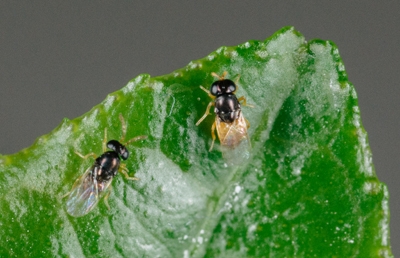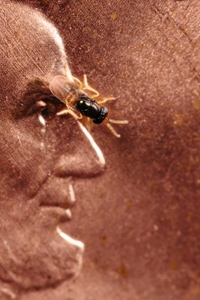
Farmers are diligently treating orchards where the pest has been found, county ag commissioners are monitoring traps to keep tabs on ACP movement, and UC researchers are looking into a wide variety of novel techniques to disarm ACP and the disease. In December, UC Cooperative Extension biological control specialist Mark Hoddle began releasing a newly imported natural enemy of ACP, Diaphorencyrtus aligarhensis (DA).
“We've released about 2,000 now at select urban sites,” Hoddle said. “It's too early to tell if we are getting attacks, but we are monitoring carefully for this type of activity.”
Hoddle said it isn't the ideal time for DA to become established in California citrus. Cool weather and short days have hindered ACP population growth, so DA likely are struggling to find enough ACP to attack.
“But we keep pumping them out there as the alternative is letting them to die in quarantine,” Hoddle said. “At least if they are outside they may find some ACP to kill.”

Since then, CDFA has raised a million Tamarixia and released them in Southern California for ACP management. It appears Tamarixia has become established, is moving around on its own and killing Asian citrus psyllids. State and federal agencies are now beginning to work with DA as well.
“We've given starter colonies of the new insect to CDFA. They have a mass rearing facility at Mt. Rubidoux in Riverside, where they currently mass produce Tamarixia,” Hoddle said.
USDA plans to set up field cages around citrus trees in late spring or early summer and prune them severely to encourage new growth. ACP will be placed in the cages to enjoy the fresh, aromatic stems and leaves on the trees, and DA will be released in large numbers to attack the ACP.
“Infested branches will be trimmed off trees, taken to the lab where parasitoids are then harvested,” Hoddle said. “The adult ACP will be trapped inside the cages and killed.”
For more details, photos and a video about the new enemy of Asian citrus psyllid, see the Center for Invasive Species Research website.
An initiative to manage endemic and invasive pests and diseases is part of UC Agriculture and Natural Resources Strategic Vision 2025.